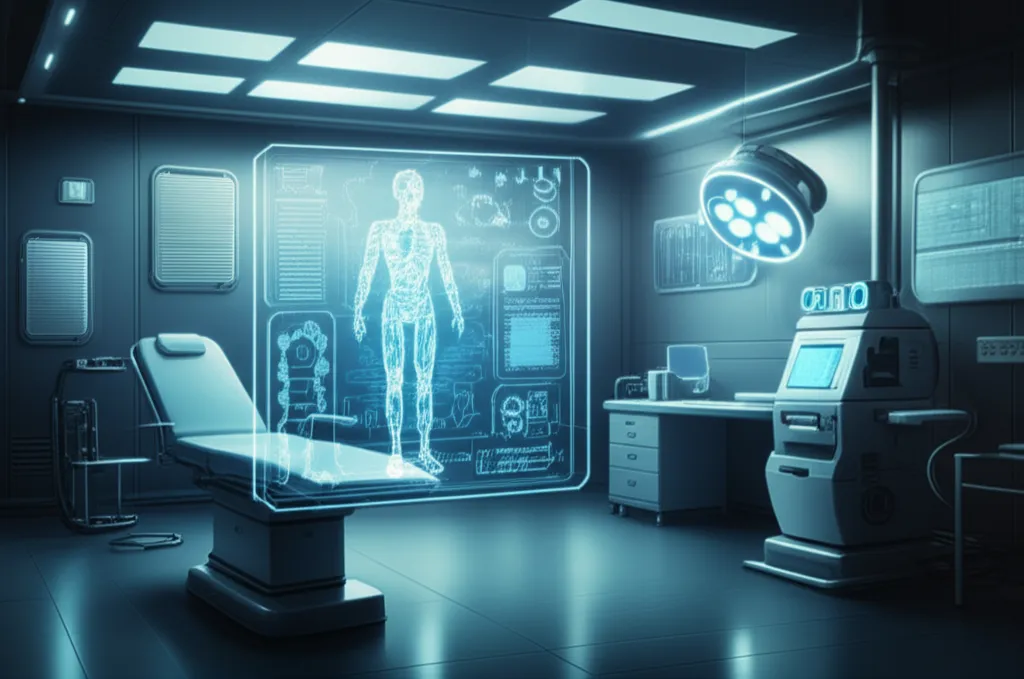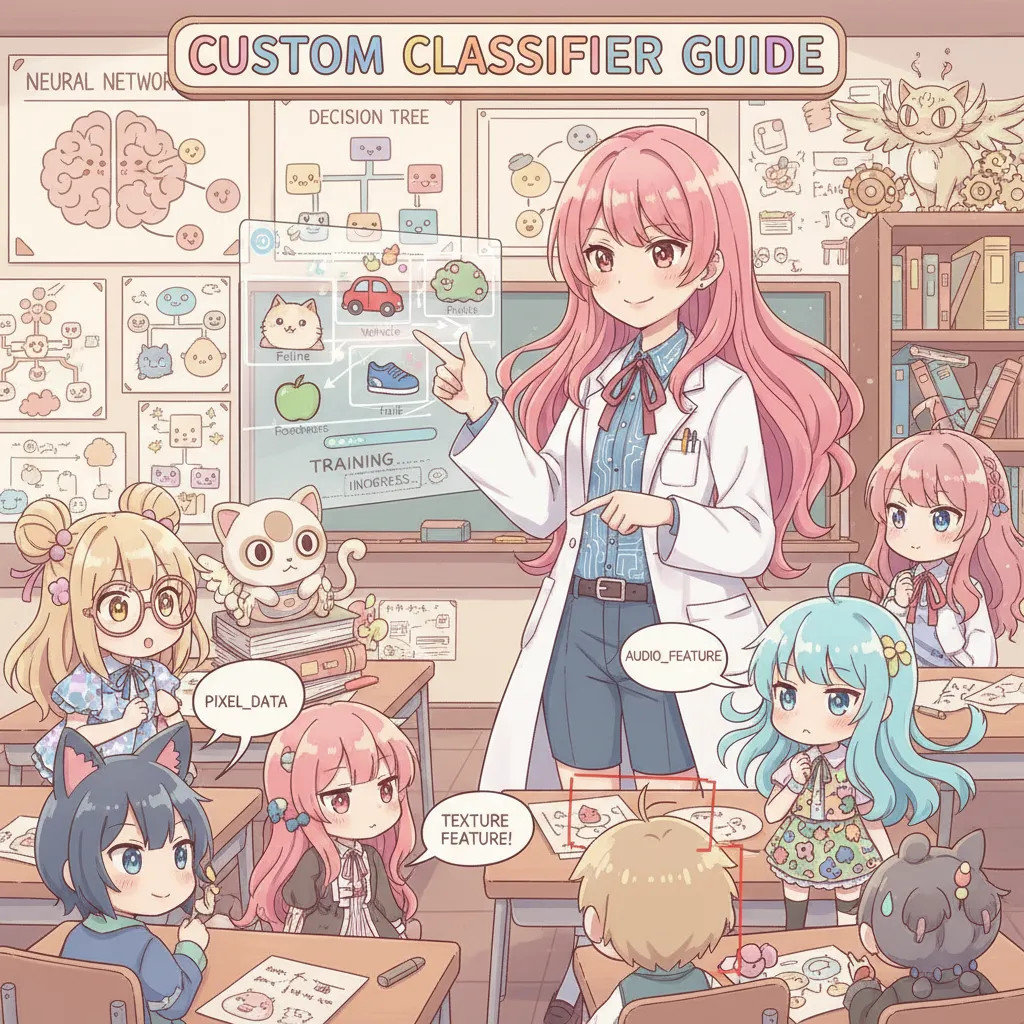The last time I visited my doctor, she spent more time chatting with a little black device on her desk than with her laptop—or with me, frankly. Curious, I asked, and learned that AI was helping her remember tiny details from our ten-year medical journey together. At first, it felt odd. But maybe that's how the future sneaks up on us: quietly, a little awkwardly, then suddenly, it feels natural. Let’s explore how artificial intelligence is turning ordinary healthcare moments into something extraordinary (sometimes in ways that might even make you smile).
AI Healthcare Innovations: Beyond the Hype and Into the Clinic
When I first tried an AI-powered symptom checker, I’ll admit, I was skeptical. I typed in my usual complaint—a nagging headache—and the digital assistant immediately asked, “Did your headache start before or after your morning coffee?” I had to laugh. It was spot on. Turns out, the caffeine withdrawal was the culprit. This moment was more than just a clever algorithm at work; it was my first real glimpse into how AI in Healthcare is quietly, but profoundly, changing the way we experience medicine.
Today, AI Healthcare Innovations are moving beyond the buzzwords and into the very heart of clinics and hospitals. We often hear about the promise of AI-Powered Healthcare Solutions, but what’s actually happening on the ground? Let’s look at how these technologies are reshaping the patient and provider experience—sometimes in ways that are easy to overlook, but impossible to ignore.
Ambient Listening Technology: Easing the Paperwork Burden
One of the most significant, yet subtle, changes is the rise of Ambient Listening Technology. If you’ve ever watched a doctor struggle to balance patient care with endless documentation, you’ll understand why this matters. Many healthcare organizations are now adopting ambient listening tools—AI systems that “listen in” during patient visits, transcribing and organizing notes automatically. This means less time spent typing and more time focused on the patient.
Research shows that ambient listening is making a real difference. By reducing the documentation burden, these tools are helping to combat clinician burnout—a problem that’s been growing for years. As Dr. Priya Raman puts it:
"Ambient AI systems are the unsung heroes supporting our clinical staff every day."
It’s not just about efficiency. It’s about well-being. Doctors and nurses can now spend more energy on what matters most: patient care. And patients, in turn, get more attentive, less distracted providers.
AI Medical Assistants and Symptom Checkers: Personalized and Precise
The use of AI Medical Assistants and AI Symptom Checkers is becoming almost routine for many patients. These tools are surprisingly perceptive—sometimes asking questions so specific, it feels like they know you personally. They don’t just spit out generic advice; they tailor their responses based on your symptoms, history, and even lifestyle habits. That’s a leap forward from the old days of “Dr. Google.”
What’s more, these AI-powered solutions are now integrated into many clinics’ workflows. They help triage patients, flag urgent cases, and even suggest next steps for care. For patients, this means faster answers and less uncertainty. For clinicians, it means a valuable partner in decision-making.
AI-Driven Chatbots: More Than Just Appointment Reminders
Perhaps the most visible face of AI Healthcare Innovations is the rise of AI-driven chatbots. These aren’t just glorified appointment schedulers. They’re expected to save the healthcare industry a staggering $3.6 billion globally by 2025. But the value goes beyond dollars and cents.
In many clinics, chatbots now do more than answer FAQs. They provide emotional support, comforting anxious patients before procedures or while they wait for results. In some hospitals, chatbots even send out jokes and health tips to waiting room screens, lightening the mood and making the experience a little less stressful.
AI chatbots help patients navigate insurance questions.
They offer medication reminders and follow-up care instructions.
Some are trained to recognize signs of distress and escalate to a human provider if needed.
It’s a subtle shift, but an important one. AI in Healthcare is no longer just about efficiency—it’s about empathy, too.
Changing the Clinic Experience—One Interaction at a Time
The adoption of AI assistants and ambient listening technology is quietly transforming the way clinics operate. It’s not always flashy, but it’s real. From reducing burnout among healthcare workers to providing both practical and emotional support for patients, these AI-powered healthcare solutions are making a difference—often in ways we don’t even notice.
As these innovations become more familiar, they’re changing not just how we interact with healthcare, but how we feel about it. The future isn’t just about smarter algorithms; it’s about better care, for everyone.
Numbers Don’t Lie: The Real Growth of AI in Healthcare
Let’s be honest—just a few years ago, the idea of AI in Healthcare sounded like science fiction. Now, it’s more like science fact. If you’ve visited a hospital or clinic lately, there’s a good chance you’ve already benefited from some form of artificial intelligence, whether you realized it or not. The numbers tell a story that’s hard to ignore: 80% of hospitals now use AI in some capacity. That’s not just a trend; it’s a transformation. Even your grandma’s local clinic is probably onboard.
What’s really striking is how quickly this shift has happened. A decade ago, AI in healthcare was mostly a topic for academic journals and tech conferences. Fast forward to today, and it’s become a staple in everyday medical practice. From streamlining administrative tasks to supporting clinical decisions, AI is everywhere. And it’s not just about the technology—it’s about the scale. The AI healthcare market is projected to leap from $32.3 billion in 2024 to an astonishing $208.2 billion by 2030. That’s more than a sixfold increase in just six years.
To put that in perspective, I once tried to grow an indoor plant collection. Let’s just say, if my plants grew at the pace of the AI Healthcare Market, I’d be living in a jungle by now. But unlike my ambitious plant project, the growth of AI in healthcare isn’t slowing down. In fact, it’s accelerating.
AI Is Mainstream—And It’s Everywhere
When I talk to healthcare professionals, there’s a sense of inevitability about AI. It’s not a question of “if” anymore, but “how fast.” As Dr. Michael Cheng puts it:
“AI adoption in healthcare isn’t a question of if—it’s how fast.”
This mainstream adoption is visible across the board. Hospitals are using AI to manage patient records, predict patient outcomes, and even assist in diagnosing complex conditions. Research shows that AI in Healthcare is now a core part of the workflow in most medical facilities. The days of AI being a futuristic buzzword are over; it’s a practical tool that’s reshaping how care is delivered.
Generative AI: From Buzzword to Boardroom Priority
One of the most exciting Healthcare AI Trends right now is the rise of Generative AI in Healthcare. According to recent studies, 46% of U.S. healthcare organizations are already in the early stages of implementing generative AI. What does that mean in practice? Think of AI systems that can summarize patient visits, draft clinical notes, or even generate personalized treatment plans. It’s not just about efficiency—although that’s a big part of it. It’s about freeing up clinicians to focus on what matters most: patient care.
Healthcare leaders are taking notice. In fact, 92% of executives believe that generative AI improves operational efficiency, and 65% say it helps them make faster decisions. That’s a huge shift from the days when AI was seen as a risky experiment. Now, it’s a boardroom priority, shaping strategy and investment decisions at the highest levels.
Global Growth: North America Leads, Asia-Pacific Surges
It’s also fascinating to see how the AI Healthcare Market is evolving globally. North America still leads in overall adoption, thanks to early investments and a robust tech ecosystem. But keep an eye on the Asia-Pacific region. Studies indicate that Asia-Pacific is experiencing the fastest growth rate in AI adoption, driven by expanding healthcare needs and rapid digital transformation. If current trends continue, we could see a much more balanced global landscape in the next few years.
AI Trends 2025: What the Numbers Reveal
80% of hospitals now use AI in some form.
The AI in healthcare market is projected to grow from $32.3 billion in 2024 to $208.2 billion by 2030.
46% of U.S. healthcare organizations are starting generative AI projects.
North America leads in adoption, but Asia-Pacific is the fastest-growing region.
These numbers aren’t just statistics—they’re signals of a healthcare system in the midst of a profound transformation. AI is no longer a distant promise. It’s here, it’s growing, and it’s quietly revolutionizing the way we experience healthcare, one doctor visit at a time.
AI’s Human Side: Can Machines Really Understand What Patients Need?
When we talk about AI in Healthcare, the conversation often centers around data, diagnostics, and efficiency. But there’s another side to this story—one that’s quietly unfolding in clinics and hospitals everywhere. It’s about how AI is starting to understand not just our symptoms, but our feelings, fears, and needs as patients. I’ve seen this firsthand, and it’s changing the way we think about the benefits of AI in medicine.
Let me share a moment that stuck with me. I was observing a patient interact with an AI-powered chatbot before a minor surgery. The patient admitted to feeling nervous, almost embarrassed by their anxiety. The chatbot replied, “It’s okay to be nervous; everyone feels that way before surgery.” The patient actually smiled—relief washing over their face. It was a simple exchange, but it felt deeply human. That’s when I realized: AI medical assistants are learning to do more than just answer questions. They’re learning to listen.
This shift is part of a broader trend. AI healthcare innovations are no longer just about crunching numbers or flagging abnormal test results. Increasingly, these systems are being trained on millions of patient interactions, picking up on subtle cues that even seasoned professionals might miss. For example, research shows that AI can now help predict not only medical complications, but also social and emotional factors that affect recovery—like loneliness, anxiety, or lack of support at home. Sometimes, these insights come before a doctor or nurse even notices a problem.
It’s not just a matter of convenience. The AI impact on patient care is profound. AI-driven chatbots now handle millions of patient queries each year, offering not just information but comfort and reassurance. Studies indicate that 80% of hospitals are using AI to enhance patient care and workflow efficiency, and the global healthcare AI market is projected to reach over $120 billion by 2028. That’s a staggering number, but what’s more impressive is the quiet revolution happening in exam rooms and hospital beds—where AI is helping patients feel seen and heard.
Of course, it’s not all smooth sailing. AI isn’t perfect, and it never will be. Algorithms are only as good as the data they’re trained on, and that data can carry hidden biases. I’ve spoken with doctors and nurses who are cautious about relying too heavily on “black box” solutions—those AI systems whose inner workings are hard to explain. They know that a missed nuance or a subtle bias can have real consequences for patient care. That’s why human oversight remains essential. As Dr. Lina Martinez put it,
“We must teach AI systems empathy, not just efficiency.”
This partnership—between the analytical power of AI and the warmth and wisdom of real human beings—is where the future of healthcare truly lies. AI can process vast amounts of information in seconds, flagging risks and suggesting next steps. But only a human can hold a patient’s hand, notice a trembling voice, or offer a reassuring smile. The best care comes when these strengths are combined.
What’s fascinating is how the role of AI is evolving. It’s no longer just an analytical tool; it’s becoming an emotional support partner. Providers are now prioritizing the balance between sophisticated algorithms and genuine patient care. In fact, 92% of healthcare leaders believe that generative AI improves operational efficiency, but they also recognize the need for ethical checks and human judgment. The goal isn’t to replace doctors or nurses, but to give them better tools—so they can spend more time connecting with patients, and less time buried in paperwork.
In the end, the real benefits of AI in medicine may not be found in faster test results or streamlined workflows—though those are important. Instead, it’s about creating space for empathy, understanding, and trust. As AI continues to evolve, so too does our vision of what compassionate care can look like. The future of healthcare isn’t just high-tech—it’s deeply human.



